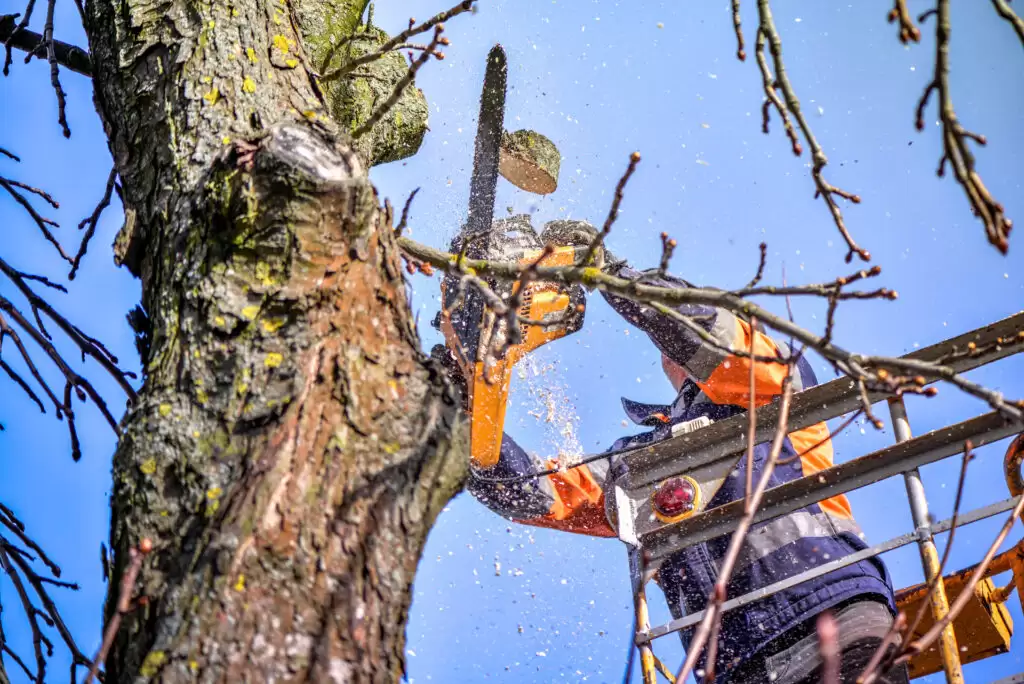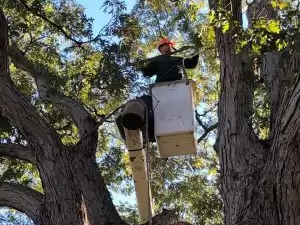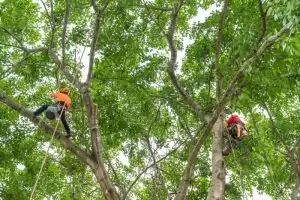Orange trees are not only beautiful additions to your garden but also a source of delicious, vitamin-rich fruits. However, to ensure your orange tree thrives and continues to bear juicy oranges, proper care and maintenance are essential. One crucial aspect of caring for your orange tree is knowing how to trim it effectively. Proper pruning helps channel the tree's energy into producing larger, juicier, and sweeter oranges. Trimming allows more sunlight to reach the inner branches, stimulating growth and fruit development.
Removing dead or diseased branches reduces the risk of infections spreading throughout the tree. Pruning helps shape your orange tree, making it not only healthier but also more visually appealing in your garden. A well-trimmed tree is easier to care for and monitor, allowing you to spot and address issues promptly.
We will delve into the details of when to trim your orange tree, the essential tools you'll need, pruning techniques, and a step-by-step guide to help you trim your tree with confidence. By the end of this guide, you'll be equipped with the knowledge and skills to nurture a thriving and fruitful orange tree in your garden. Let's get started!
Why Trim an Orange Tree?
When it comes to maintaining your orange tree, pruning isn't just a chore; it's a horticultural necessity. Understanding why you should trim your orange tree will motivate you to embrace this essential aspect of tree care.Improved Air Circulation:
Orange trees, like all plants, require a healthy flow of air around their branches and foliage. Trimming helps create space between branches, reducing the risk of fungal diseases like citrus canker and mold. Good air circulation also aids in preventing pests from taking hold.Enhanced Sunlight Exposure:
Orange trees thrive when they receive ample sunlight. Overgrown branches can cast shade on other parts of the tree, hindering the development of fruit and foliage. Pruning opens up the canopy, allowing sunlight to penetrate deep into the tree, encouraging even growth and better fruit production.Disease Prevention:
Diseases can quickly take root in neglected orange trees. Dead or diseased branches are an open invitation for pathogens and pests. Regular pruning helps you identify and remove these problem areas, reducing the chances of diseases spreading and preserving the tree's health.Controlled Growth:
Left unattended, orange trees can become unruly and difficult to manage. Pruning enables you to shape the tree according to your preferences, making it more aesthetically pleasing and manageable in your garden. It also prevents branches from becoming too heavy and potentially breaking under the weight of fruit.Fruit Quality and Quantity:
One of the most rewarding aspects of owning an orange tree is the harvest. Proper trimming redirects the tree's energy to the development of high-quality, juicy oranges. Thinning out excess growth ensures that each fruit receives adequate nutrients, resulting in larger, tastierLongevity:
A well-maintained orange tree can live for many years, providing you with decades of delicious fruit. Regular pruning can extend the tree's lifespan by promoting healthy growth and reducing the risk of structural issues.When to Trim an Orange Trees?
Timing is crucial when it comes to trimming orange trees. Pruning at the right time of year can maximize the benefits and minimize potential stress to your tree. The ideal time to trim your orange tree is typically during late winter to early spring.- Dormant Season:
- Encouraging Spring Growth:
- Avoiding Frost Damage:
- Disease Prevention:
- Timing for Different Goals:
Safety Precautions:
Use a Sturdy Ladder: If your orange tree requires pruning at heights, use a stable and well-maintained ladder. Ensure that the ladder is on level ground and secure before climbing. Position Yourself Safely: Stand to the side of the branch you are cutting, not directly beneath it. This prevents falling debris from hitting you. Keep the Ground Clear: Remove any obstacles, including garden tools, children's toys, or pets, from the area around the tree to prevent accidents. Proper Technique: Make clean cuts at a slight angle just above a bud or lateral branch to encourage proper healing and regrowth. Avoid leaving stubs or making excessively long cuts. Prune Conservatively: Start with light pruning and avoid removing more than 25% of the tree's canopy in a single year. Over-pruning can stress the tree. Dispose of Debris: Collect and dispose of all pruned branches and debris appropriately. This prevents the spread of disease and keeps your garden tidy.Pruning Techniques
Trimming an orange tree requires the application of various pruning techniques to achieve specific goals. Understanding these techniques will help you make informed decisions when it comes to shaping and maintaining your tree. Here are some essential pruning techniques for orange trees:- Thinning:
- Heading:
- Deadwood Removal:
- Suckering and Water Spout Removal:
- Fruit Thinning:
- Structural Pruning:
How to Trim an Orange Tree?
Now that you understand the importance of pruning techniques and have the right tools and safety precautions in place, let's delve into a step-by-step guide on how to trim your orange tree effectively.Gather Your Tools and Safety Gear
Before you begin, gather all the necessary tools, including pruning shears, loppers, a pruning saw, and a pole pruner if needed. Put on your safety gear, including gloves, safety glasses, and appropriate footwear.Inspect the Tree
Walk around your orange tree and carefully inspect it. Identify any dead, diseased, or damaged branches, as well as any areas that appear crowded or overgrown. Note the branches you plan to prune.Start with Deadwood Removal
Begin by removing any dead or diseased branches. Use your pruning shears or pruning saw to make clean cuts just above the nearest live, healthy wood. This will prevent the spread of diseases and improve the overall health of the tree.Thin Out Crowded Areas
Next, focus on thinning out crowded areas of the tree's canopy. Start by making thinning cuts to remove small, weak, or inward-growing branches. Create a more open structure to allow light and air to penetrate.Heading Cuts
If you need to control the height or shape of the tree, use heading cuts. Cut back the tips of branches to a bud or lateral branch. This can help manage the tree's size and shape to your liking.Suckering and Water Spout Removal
Inspect the base and the interior of the tree for suckers and water sprouts. Remove them promptly to redirect the tree's energy to productive branches.Fruit Thinning (If Needed)
If your tree is carrying an abundance of small fruits, consider thinning them. Remove excess fruit clusters, leaving space between the remaining fruits. This ensures better-quality oranges and prevents branch breakage due to heavy fruit loads.Make Clean Cuts
Throughout the pruning process, make clean cuts just above a bud or lateral branch. Avoid leaving stubs, as they can be entry points for diseases. Use sharp tools for clean, precise cuts.Step Back and Assess
Periodically step back and assess the tree's overall shape and balance as you prune. Ensure you're achieving your desired results and maintaining a healthy structure.Dispose of Debris
As you prune, collect the pruned branches and debris and dispose of them properly. This prevents the spread of diseases and keeps your garden tidy.Post-Pruning Care
After pruning, give your orange tree some extra care. Water the tree as needed, and consider applying a balanced citrus fertilizer to provide nutrients for healthy growth.Regular Monitoring
Keep an eye on your pruned tree in the coming weeks and months. Monitor its growth and health, and be prepared to perform additional maintenance if necessary.Dealing with Large Branches
While most of your orange tree's pruning can be accomplished with hand pruners, loppers, and smaller tools, you may encounter larger branches that require special attention. Dealing with large branches safely and effectively is crucial to the overall health and aesthetics of your tree.Assess the Branch:
Before attempting to remove a large branch, carefully evaluate its size, position, and health. Determine whether it's necessary to remove it or if you can prune it back to a smaller lateral branch.Make a Three-Part Cut:
When removing a large branch, use a technique called a three-part cut to avoid tearing and damaging the tree. Here's how to do it: First Cut: Make a shallow cut on the underside of the branch about a foot away from the trunk. This cut prevents the branch from tearing when you make the final cut. Second Cut: Create a second cut from the top of the branch a few inches farther outward from the first cut. This cut should extend partially through the branch and should meet the first cut, creating a notch. Final Cut: Make the final cut just outside the branch collar (the swollen area where the branch meets the trunk). This cut should remove the remaining stub without damaging the trunk. Use a Pruning Saw: For branches too large for loppers or hand pruners, a pruning saw is the best tool. Choose a saw with a sharp blade and make smooth, clean cuts. Work Carefully: When removing large branches, work slowly and carefully to avoid injuring yourself or damaging the tree. Ensure that no one is standing below the branch being removed, and consider using a ladder or pole pruner for better reach and control. Prune in Stages: If you need to remove a substantial portion of a branch but don't want to eliminate it entirely, prune it in stages over the course of a few years. This minimizes stress on the tree and allows it to adapt gradually. Seek Professional Help (If Necessary): If you're uncomfortable or unsure about handling large branches, or if the branch in question is a major structural component of the tree, consider consulting a professional arborist. They have the expertise and equipment to handle large tree pruning safely.Aftercare and Maintenance
Trimming your orange tree is just one part of the equation for maintaining a healthy and productive tree. After you've completed the pruning process, it's crucial to provide proper aftercare and ongoing maintenance to ensure your tree continues to thrive. Here are the essential steps for aftercare and maintenance:- Clean Up Debris:
- Watering:
- Fertilization:
- Mulching:
- Monitor for Pests and Diseases:
- Prune Lightly as Needed:
- Protect Against Frost:
- Keep an Eye on Fruit Load:
- Regular Inspections:
- Document and Learn:




